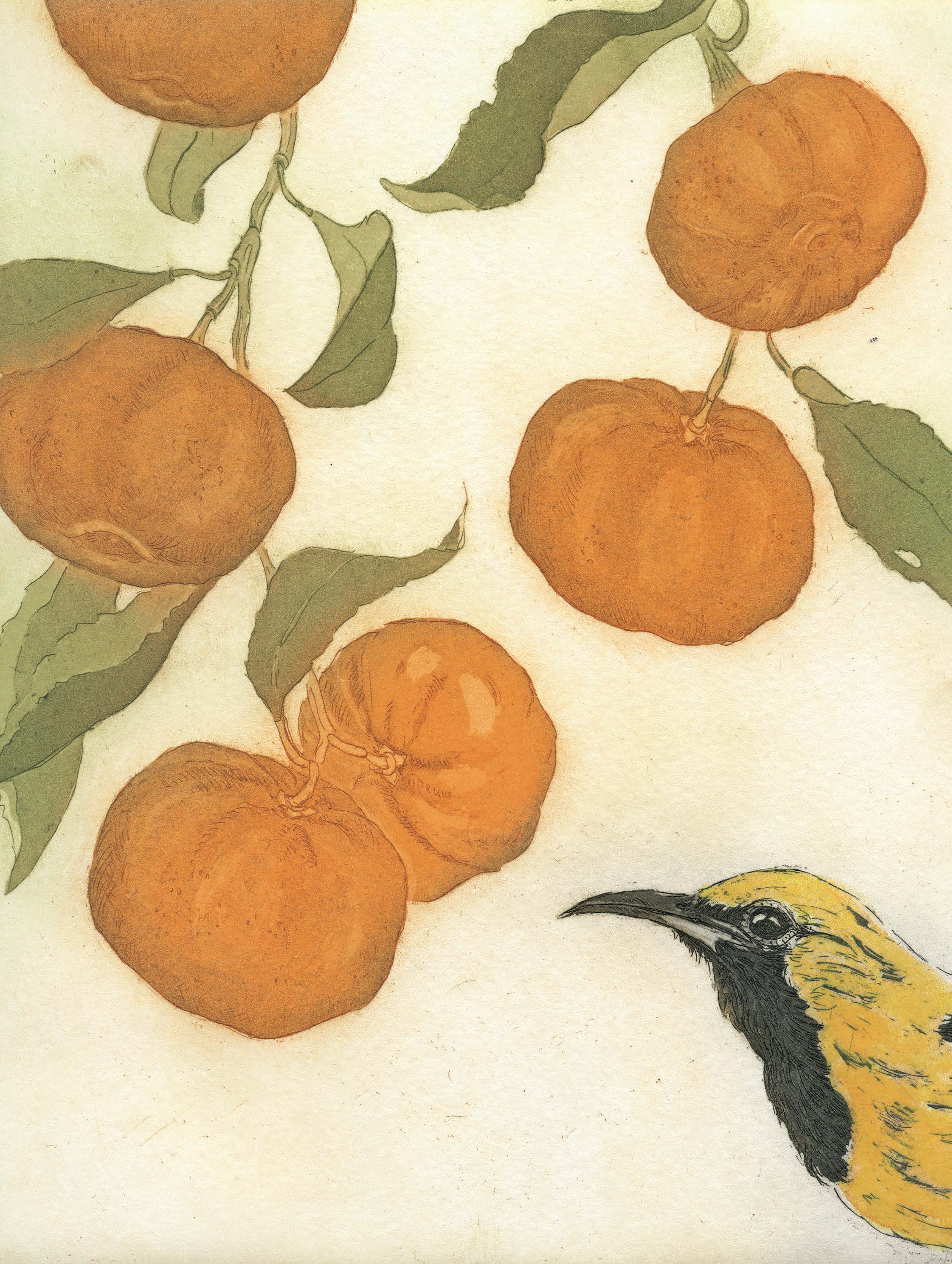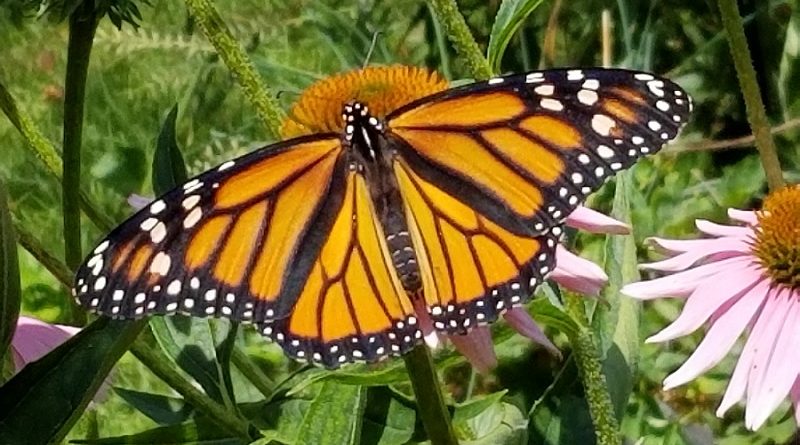“An Amazing Year” for Eastern Monarchs?
Podcast: Play in new window | Download (Duration: 1:45:24 — 50.0MB)
Subscribe: Apple Podcasts | Spotify | Android | iHeartRadio | Podchaser | Email | TuneIn | RSS | More
(September 22, 2019) Has it been “an amazing year” for the Eastern monarch butterfly (Danaus plexippus)? Well, if you look at reports from Missouri to New Hampshire, the answer is a resounding “yes.” Here are just some of the headlines.
Seen a lot of monarch butterflies lately? You’re not alone.
A Good Year For Monarch Butterflies
‘Bumper year’ for monarch butterflies in New Hampshire, but will it last?
And this headline from a post at Journey North, which, for 25 years, has utilized citizen science to track migrations of this iconic and threatened species:
An Amazing Year for the Eastern Migratory Monarch Population
It was just this year that Journey North announced that it was moving to the University of Wisconsin-Madison Arboretum. Arboretum Director Karen Oberhauser writes about the reports that have poured in over the summer and considers the important question…why?
First, last year was a good year for monarchs. Monarch numbers at the Mexico wintering sites were higher than they had been for over a decade, so more monarchs started the journey north this year than in previous years. Second, as monarchs started breeding in the southern US, they found better conditions; the drought had broken, and spring temperatures were conducive to quick development. Conditions were also good in the northern breeding grounds. It was wet, but not too wet, so milkweed and nectar plants were in good condition, but there weren’t a lot days that monarchs couldn’t fly because it was raining. It was warm, but not too warm. Extremely hot conditions slow monarch development and can lead to higher mortality, and cool conditions also slow development. Fast development minimizes the time that monarchs spend in their vulnerable egg and larva stages, and allow faster generation time. With more generations, monarch numbers can increase more during the summer.
I find those comments interesting, considering how folks have been complaining about how wet and cool the 2019 spring was. So I guess we need an expert in the room to address that issue. How about two experts?
I can’t believe it’s been a year since Doug Taron, PhD, has been on the show. Doug is Chief Curator of the Chicago Academy of Sciences (which you probably recognize as the Peggy Notebaert Nature Museum), director of the Illinois Butterfly Monitoring Network, and, despite the lag since his last appearance, a show regular.
But he’s not alone this time. Allen Lawrance, who has been on our show a couple of times, will be in studio with Doug. Lawrance is Associate Curator of Entomology at the museum.
Recently, they appeared on an NBC5 Chicago report about tagging monarchs. And Lawrance was also quoted in a Block Club Chicago story about spiders. So, of course, we’re going to ask him about spiders. And since Doug happens to be an expert on dragonflies, too, we’re going to ask him a few questions about that wonderful insect. In fact, dragonflies made the news recently.
This is going to be an excellent adventure. Tune in!
Fruit Trees for Every Garden
If you think “organic apples” is an oxymoron, you might want to pick up a copy of the book Fruit Trees for Every Garden. This excellent new book by Orin Martin with Manjula Martin gives hope to every fruit lover. And when a book about growing things has a foreward by Alice Waters, you know it’s going to be something special. Indeed, it is.
It starts with Orin, who manages the three-acre Alan Chadwick Garden at the Center for Agroecology and Sustainable Farming Systems at the University of California, Santa Cruz. “Three acres,” you say? So? Well, those three acres contain 600 fruit trees. Most of us can’t manage even one properly. He is also manager of the orchard at UCSC’s Farm & Garden, and has been teaching people how to grow fruit trees organically since 1977.
 Manjula Martin, Orin’s daughter, is a writer, managing editor of the literary magazine Zoetrope: All-Story, and editor of the book Scratch: Writers, Money, and the Art of Making a Living.
Manjula Martin, Orin’s daughter, is a writer, managing editor of the literary magazine Zoetrope: All-Story, and editor of the book Scratch: Writers, Money, and the Art of Making a Living.
And you might want to pick up the book just for the gorgeous intaglio etchings by Orin’s wife Stephanie that introduce each section. Take a look at the one on the left.
It’s evident that there is no shortage of talent in that family.
But I digress.
While this is truly a book about growing fruit trees, one could be excused for using it as a primer for organic farming and gardening. As Orin Martin walks you through his organic methods, it’s easy to see they could be applied to almost anything you can grow and put on your dinner table. He writes,
In Europe, organic growers are referred to as biological growers, which is probably a more appropriate and descriptive term than organic. The system of biological gardening we use at the UCSC Farm & Garden has many names: Biodynamic French Intensive, French intensive, raised bed gardening, deep bed system, wide bed system, Chinese intensive, and Biointensive gardening (as popularized by John Jeavons).
The approach is about making the soil as fertile as possible before, if possible, the tree is planted. When I read this, I had a moment of cognitive dissonance. Doesn’t tree science now dictate that one should expect a newly-planted tree to adapt to the soil that is already there? I am every so grateful that Martin addresses this issue. His point is that we’re not planting trees. We’re planting fruit trees. Big difference.
Conventional wisdom (these days) is that you should do nothing to enrich the soil in the planting hole. As general advice, this is not bad. However, I often find that, in general, life is specific. That is to say, most of those studies were done on ornamental trees planted in the Southeast. With fruit trees, one of the tenets of success is to rapidly (within 3-5 years) establish the height and spread of the tree. An enriched planting hole, ,couple with aggressive annual growth goals, achieves this ain. The goal is to double or even triple the canopy of the tree in each of the first 3 years. Sunshine, water, and fertilizer are your tools. It’s pedal to the metal, judiciously, of course.
he proceeds to tell you everything you need to know about how to get that done. He explains how to select a tree, based on its needs (did you even know there was a thing called “chill hours”?) and your situation. He tells us how a tree–especially a fruit tree–grows. He walks you through tree pruning, which I often describe as part science, part art, part nightmare. You’re probably going to have to bring this book out with you to your orchard or backyard if you’ve never pruned a fruit tree before. But I don’t think Martin will be insulted by that.
He addresses watering (a big deal), pests and diseases (more big deals), fertilizing and composting (the biggest deal of all). He explains how to make cover crops and sunlight and micro climates work for you. And, in a second moment of cognitive dissonance, he discusses the importance of double digging. Double digging? Seriously? I thought we gave up on that decades ago! Well, now you know what one of my questions will be on today’s show.
It’s a clearly written, insightful and, to me, sometimes surprising book. Don’t even think about planting a fruit tree without reading this book at least twice.
Orin and Manjula Martin join us on the program today.


